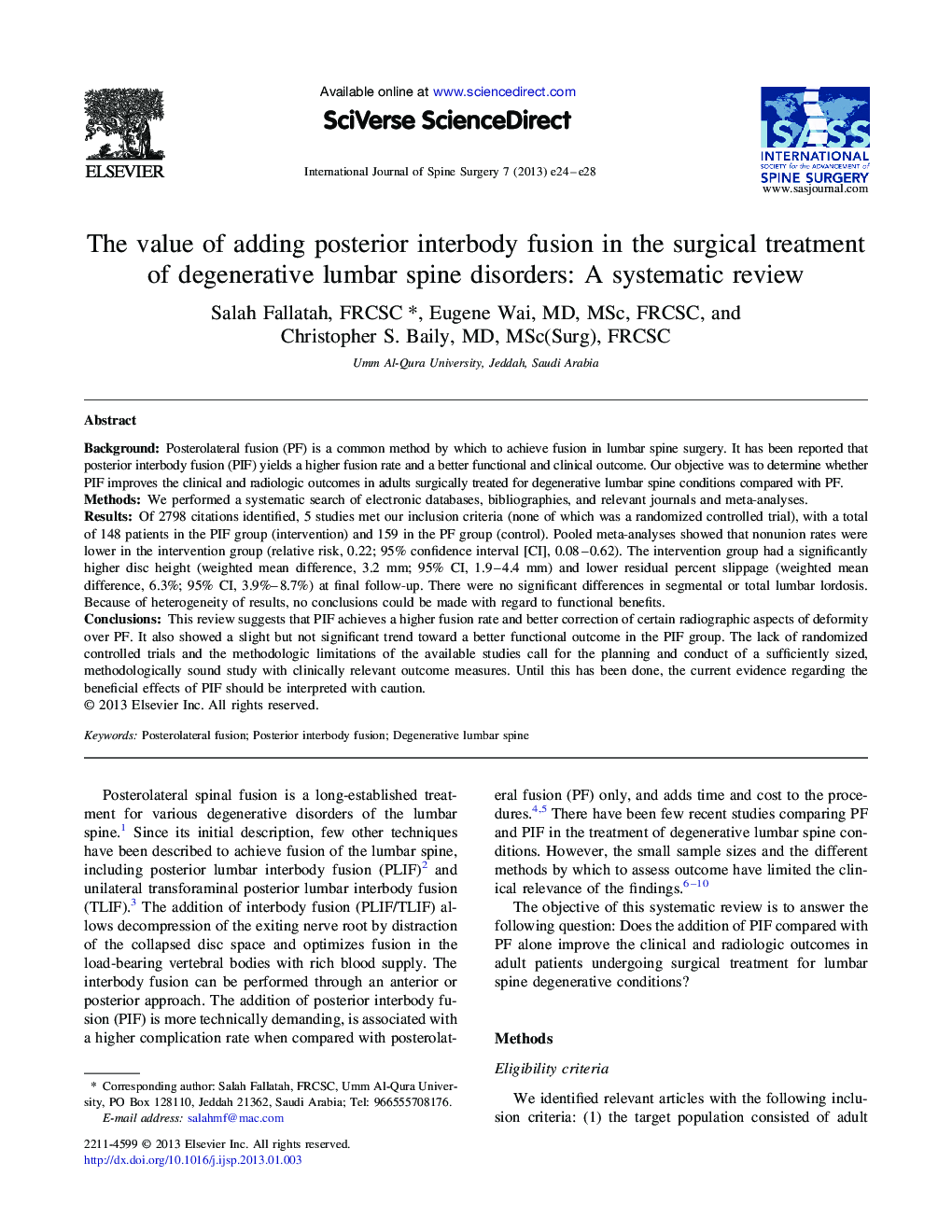| Article ID | Journal | Published Year | Pages | File Type |
|---|---|---|---|---|
| 4059801 | The International Journal of Spine Surgery | 2013 | 5 Pages |
BackgroundPosterolateral fusion (PF) is a common method by which to achieve fusion in lumbar spine surgery. It has been reported that posterior interbody fusion (PIF) yields a higher fusion rate and a better functional and clinical outcome. Our objective was to determine whether PIF improves the clinical and radiologic outcomes in adults surgically treated for degenerative lumbar spine conditions compared with PF.MethodsWe performed a systematic search of electronic databases, bibliographies, and relevant journals and meta-analyses.ResultsOf 2798 citations identified, 5 studies met our inclusion criteria (none of which was a randomized controlled trial), with a total of 148 patients in the PIF group (intervention) and 159 in the PF group (control). Pooled meta-analyses showed that nonunion rates were lower in the intervention group (relative risk, 0.22; 95% confidence interval [CI], 0.08–0.62). The intervention group had a significantly higher disc height (weighted mean difference, 3.2 mm; 95% CI, 1.9–4.4 mm) and lower residual percent slippage (weighted mean difference, 6.3%; 95% CI, 3.9%–8.7%) at final follow-up. There were no significant differences in segmental or total lumbar lordosis. Because of heterogeneity of results, no conclusions could be made with regard to functional benefits.ConclusionsThis review suggests that PIF achieves a higher fusion rate and better correction of certain radiographic aspects of deformity over PF. It also showed a slight but not significant trend toward a better functional outcome in the PIF group. The lack of randomized controlled trials and the methodologic limitations of the available studies call for the planning and conduct of a sufficiently sized, methodologically sound study with clinically relevant outcome measures. Until this has been done, the current evidence regarding the beneficial effects of PIF should be interpreted with caution.
